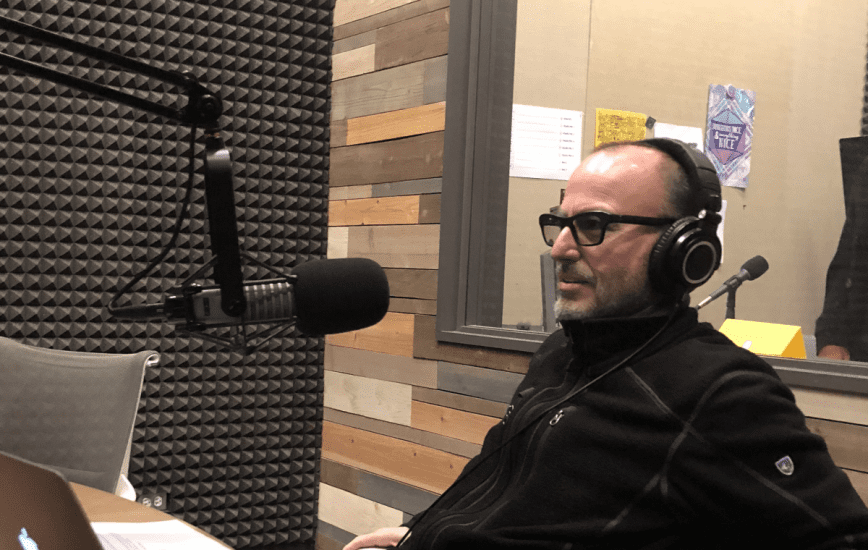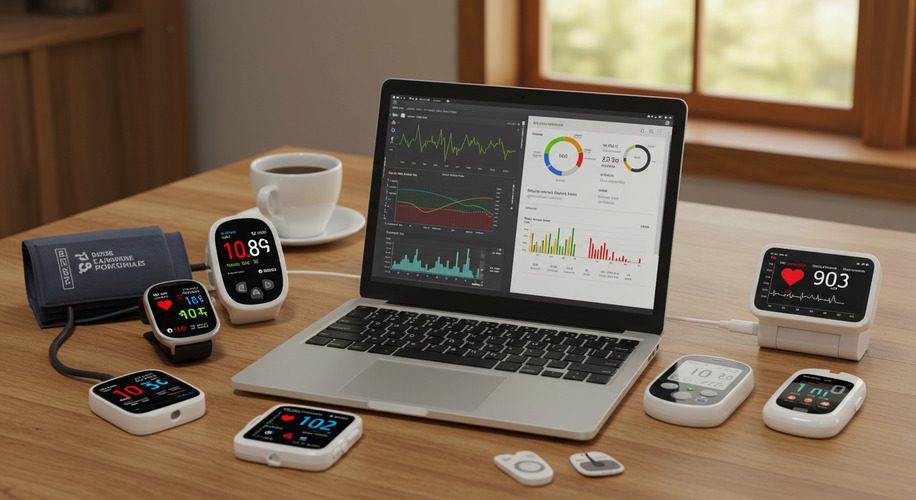
Article
Building Interoperability in SaMD: Tools and Best Practices
This is Part Two of a two-part interview between Orthogonal’s Randy Horton and Danny Bernstein of metaMe Health.
Read Part One of the interview here: How metaMe Democratizes IBS Care with Prescription DTx
Orthogonal’s Randy Horton, VP of Partnerships, sat down with long time partner, client and colleague Danny Bernstein from metaMe Health. Their Digital Therapeutics (DTx) app Regulora just received FDA clearance as a Prescription Digital Therapeutic (PDT). There’s a lot to learn from their years of work getting Regulora ready to market.
Regulora treats irritable bowel syndrome (IBS), a condition that affects 10% of people worldwide. Danny’s personal experience with IBS led him to the North Carolina protocol: an effective gut-directed hypnotherapy protocol for treatment of IBS, but whose distribution is limited to primarily major medical teaching centers in the U.S. because of the small number of practitioners trained in this highly specialized technique. Danny wondered if this therapy could be brought to a larger patient population through digital health.
Danny and the team at metaMe started in telehealth, but pivoted to PDT in order to scale the solution. Their app Regulora administers the protocol the same way every time. Its effectiveness is on par with in-person therapist treatments and boasts a 90% adherence rate in clinical trials. Non-invasive, effective and with minimal side effects, it has the potential to vastly improve the lives of patients who are suffering from IBS.
In Part Two of this interview, Danny discusses metaMe’s journey from concept to product. He discusses team members and mentors who contributed to metaMe’s success, as well as the investors who propelled metaMe to its FDA clearance and whose funding spurs on further innovation in DTx generally, and PDT more specifically, to treat gastrointestinal conditions.

Randy Horton:
Talk about your funding journey. Startup funding is challenging in general, MedTech’s even more challenging, digital is even newer. How did you keep going to get this far? You guys have been at this venture for 10 years or so, right?
Danny Bernstein:
Close to seven years. The first three and a half years involved creative ways to be productive and self-fund the activities. We worked with 30 different subject matter experts who contributed their efforts towards deliverables in exchange for equity. We managed this in-house by following the guidelines that were set out by Mike Moyer in Slicing Pie. I don’t know if you’re familiar with this technique, but you’re compensating people for their time. This was a great way to get us out of the gate and be productive while keeping our burn rate under control.[1]

Three years ago we met investor Lionbird, who led our seed round as well as other VCs, family offices, friends, families and angels who put in capital to get us this far. Hyde Park Angels led our recent bridge round that closed and now metaMe has raised $7.4 million to date since July 2019.
We are now into our Series A. A $20M round that will be used for revenue-generating activities in-market. We will be in market with Regulora this year (2022) along with other intellectual property (IP) in the gastrointestinal (GI) space that we will continue to develop.
Randy Horton:
At this point in your journey, what were your lessons learned in terms of getting to this point and getting the FDA clearance? If you could tell yourself six years ago what you know now, what would you tell yourself?
Danny Bernstein:
I’ve spent a lot of time with Bernhard Kappe (the CEO and founder of Orthogonal) over the years, oftentimes as a friend and at times as an advisor. Bernhard suggested to me, “While you’re pre-regulatory and pre-revenue, focus on the data,” and we’ve done that from an early stage. We are constantly looking for evidence that what we’re doing is safe, effective and that patients are satisfied with the outcome.
“Bernhard [Kappe] suggested to me, ‘While you’re pre-regulatory and pre-revenue, focus on the data,’ and we’ve done that from an early stage. We are constantly looking for evidence that what we’re doing is safe, effective and that patients are satisfied with the outcome. ”
– Danny Bernstein, metaMe Health
Randy Horton:
Looking up the evidence curve, as it were.
Danny Bernstein:
Absolutely. That’s why we’ve always included patient reported outcomes in our study, so that we understood that we were making progress in helping patients improve.
Randy Horton:
It sounds like you started with an end game in mind. You knew what data you wanted to have and where you could find it, and also knew what you could afford to get it in order to keep moving. In terms of your strategy, you’re not just thinking one study out, you’re thinking a couple studies out.
Danny Bernstein:
Without question. We have future studies in mind that we plan to do to further advance our interests, but since we will be in market with Regulora this year that’s where our focus is now. The plan is, as we raise this Series A, we will move into more product development in the GI arena, and hopefully gain a better understanding of how and why we’re effective and where we can improve.
Randy Horton:
You could go to a whiteboard and sketch out a couple lines, one being tranches of funding, one being tranches of patients and paying customers, and one being research and product development. You’ve got to be very flexible, agile, fit and always able to move deftly and creatively to get from point A to point B. How do you do it?
Danny Bernstein:
You’re always looking to prove that what you’re doing is directionally correct, and that you can hit the milestones that you’ve set out to achieve from that round of funding.
Obviously, the more of a financial buffer you have, the more you can adjust and account for misfires. But in the end, it comes down to having planned your tranches in a way that supports getting the data you need to see and hopefully drive the effort forward.
Randy Horton:
Do you think that therapeutics two, three, and four that you bring to market will be easier? Was there a lot of pain in number one that you’ll be able to handle better in the future, or do you think each one will be uniquely challenging in its own way?
Danny Bernstein:
Both. In some ways, it’ll be easier because the platform is here, risks have been reduced and many important questions have been answered. On the other hand, each condition has therapeutics out there as it is. A key question on deciding whether to drive ahead with a new therapeutic is if you think what you’re doing is going to become an obvious alternative, pairing or adjunct to what’s already out there? That’s not always the case.
Randy Horton:
I think that we’ve seen in this industry that, a lot of times, when a digital therapeutic product comes onto the market, everyone is dealing with whatever treatments are already out there. What they need to ask themselves is, is what you’re doing better, has fewer side effects, offers better outcomes, is more cost effective and more easily accessed?
Danny Bernstein:
That’s exactly right.

Randy Horton:
You need an incredible variety of skills to do a digital therapeutic, and a lot of them are, interestingly enough, new skills that haven’t really existed or haven’t been put to the test in this way. So, tell us about the team, your background and how you got this far.
Danny Bernstein:
It was more about finding the right people with the specific skill sets at the exact time we needed them. Early on, our membership at MATTER was a big part of meeting people, and networking with the people they knew too. We were fortunate to discover a talent pool who had deep experience from different areas of healthcare so that’s often who we ended up hiring.
We remain a small, tight core team. Our vendors and contractors are subject matter experts, in medicine, clinical study design, regulatory and biostatistics, marketing and public relations, etc. Add to the mix Contract Research Organizations, medical device product specialists, medical writers and life science marketing, all coming together as we needed certain skills that we did not have in house. Early on, it was really ad hoc, but eventually became clear that we were going down this FDA path and things started to crystalize.
At around that time, in 2018, I met Tim Rudolphi, and realized that he could guide us through the clinical trial process and drive us into market. Tim came on board as our CEO. He’s a veteran executive in the pharmaceutical industry with 30 years of go-to-market experience for 15 different drugs. Most recently, while he worked at Takeda Pharmaceuticals, he helped bring four different drugs for GI conditions to market, including Amitiza for IBS, Prevacid and Dexilant for GERD and Entyvio for IBD-UC.

Tim Rudolphi, metaMe Health
Randy Horton:
When you mentioned MATTER, did you actually avail yourself of their “Ask an Expert” offer, where you could book a meeting with different industry people? Or was it more just people you met around the office, by introducing yourself to speakers or neighbors?
Danny Bernstein:
I absolutely did. In fact, somebody on MATTER’s staff once told me I had more meetings with their experts by far than any other MATTER member. I took advantage of everything that MATTER had to offer. I’m a big fan of MATTER, Steven Collens and the work they do.
Randy Horton:
You really got your money’s worth out of the membership.
Danny Bernstein:
Yeah, very much so.
Randy Horton:
I’m not sure I heard you explicitly name it, but I’m curious about the skill of inducing people to engage with the human side of software, in user experience, user motivation and engagement, etc. Where did you put those skills together, in one person, or across different people?
Danny Bernstein:
Most of my life’s work has been spent in software, but my roots are in architecture. I have a master’s in architecture from Tulane University. I worked in architecture for a number of years, and I eventually moved into children’s video games and eventually healthcare. To most people that seems like a big jump, but the truth of the matter is that all of it has to be designed for people to use. Everything you design and the processes of design, whether it’s architecture or software, are very similar. From the outset of an effort, you have to keep end users in mind, understand the requirements and the intention of what you’re designing for your customers.
I bring that to the table at metaMe, and in Regulora’s case, being a patient gave me an inside track on understanding the value that came from our software. As a patient, I wasn’t finding treatments that benefited me, so I kept looking. I was introduced to the North Carolina protocol, and started transferring it from an in-person, face to face delivery, to Software as a Medical Device, that could be scalable because it did not require human intervention, beyond a diagnosis and prescription.
In terms of the patient’s interest in this, we have tremendously high adherence. Similar to my personal experience, most patients are not satisfied with the treatments that are out there. When they see what we’ve got, they see it as an opportunity to feel better and get better that doesn’t require a lot of effort and has minimal side effects.
One of the specialized groups we worked with was Grand Studio. They focus on human factors and app design while they do detailed design work in concert with us as a customer, they leave it to software engineers to fabricate the apps. That’s part of the insight into how we got to where we are.
Randy Horton:
Of the tens and tens of thousands of medical device companies, just a handful have gotten their digital therapeutics cleared by the FDA as prescription digital therapeutics. Accepting that is almost like getting an Oscar. You go up, you hold the statue and you say, “I want to thank all the people who got us here.” In that vein, is there anyone else you’d like to give a shout out to? Talk about the people who’ve helped you and given you advice, and why other people should make sure they have people like them on their teams to get them to FDA clearance.
Danny Bernstein:
The first three and a half years at metaMe, prior to raising our Seed round, involved creative ways to be productive and maintain forward momentum. As I mentioned previously, we met 30 people who worked on a variety of specific deliverables for equity are grateful to each of them for their efforts and believing in us early on.
On the product development side, we’ve been extremely fortunate to work with the software architect and software developer of Regulora, Adam Yala, from the very start. Adam is incredible at what he does and has built a simple, reliable product that people love. Adam is our CTO today and continues to develop Regulora.
Also early on we met Ed Michael of LionBird, a VC firm that’s co-located in Israel and Evanston (a suburb of Chicago). Those guys are an impressive group of people. They’re professional VCs. We were pre-regulatory and pre-revenue and LionBird led our seed round with their $2M investment. LionBird made it viable for us to raise money from others, do our study and then get through the FDA. They’re very important to our company. We also have had local Family Offices, friends and angels who have invested and helped make our efforts possible.
And finally, Oli Palsson,[2] the PsychD who developed the North Carolina protocol,[3] is amazing in so many ways. His patience, and exactitude, in everything that he says and writes, makes him a special guy and a great partner to us as a company. We owe a lot to him.
Randy Horton:
You’re like the Lin Manuel Miranda to his Ron Chernow, the biographer who figured, “I’ll write a book about Alexander Hamilton and maybe 50,000 or so people, history buffs and whatnot, will read it.” Then Lin Manuel Miranda comes in and says, “No dude, we’re going to scale this thing.” He literally grabbed it off the Barnes & Nobles table on his way down to Cabo for spring break. The next thing you know, Chernow has a million a year in cash coming in and he’s a pop culture celebrity. People point him out after the shows and mob him for autographs. He’s bewildered by the whole thing.[4]
Danny Bernstein:
I’m not sure we’re at that scale quite yet (laughs). But yes, Oli Palsson developed the North Carolina protocol, tested it, made it available to therapists, and then we licensed the digital version of the worldwide rights to the protocol, which is now called Regulora. He gave birth to something and we figured out how to make it more accessible to any IBS patient. While we cannot mention all of them by name here, there have been many people involved in very meaningful ways that have gotten us to this point.
Randy Horton:
What’s next for metaMe? You’ve got the clearance. What’s going on with the device? Where do you guys see yourself in two or five years in terms of this device, or other devices?
Danny Bernstein:
In addition to Regulora, we have two other GI products in our pipeline ready to enter clinical trials. They’re basically ready to go. Both of these products have been shown to be effective in proof-of-concept studies. We’re not starting again from scratch, but we will be doing much of the same work.
We have a platform we’ve built for Regulora, and because these new products are also for GI conditions, they’ll fit in nicely. We are in the process of launching our next raise, our Series A.
This next raise is significant at $20M. The money will be spent on revenue generating activities in the market: salespeople, meeting with GIs, our marketing agency; targeting patients with IBS who should be aware of what we’re doing and talking to their physicians about it.
The money raised will also be used for product development. We see our next products rolling out in much of the same way as Regulora.
Randy Horton:
Are you looking at other kinds of prescription digital therapeutics, ones not based on hypnotherapy?
Danny Bernstein:
Actually, no, not at this time. The other IP that we currently have is also gut-directed hypnotherapy, shown to work on functional heartburn and IBD ulcerative colitis. We are looking to help the brain and gut communicate in a way that suppresses symptoms, prevents the brain from overreacting to signals from the gut, and allows someone to remain in remission or with reduced symptoms for longer. We’re dealing with the brain and an efficient way of accessing it.

Randy Horton:
What do you read and listen to – podcasts, books, blogs – in GI, digital health, digital therapeutics? Give our readers some recommendations.
Danny Bernstein:
Brian Dolan from the Exits & Outcomes[5] paid newsletter is targeted to covering digital pharma products and FDA-regulated digital health. Brian does a ton of research and digs in deep. I love getting his perspective on digital health, digital therapeutics, and how Healthcare as-is responds and relates to these new therapeutic modalities. HealthXL also does a very good job.
Then there are people who are not in digital therapeutics or healthcare necessarily but who I like to listen to. Tim Ferris, of the Tim Ferris Show,[6] does an awesome job in these deep dive interviews. He often interviews people in healthcare and research. Tim and his guests are often out of the box thinkers. It’s an opportunity to luxuriate in these deep interviews that can last two and a half hours.
Lastly, Guy Raz on NPR, How I Built This.[7] I don’t know if you’ve listened to him, but there’s not a single founder on there who doesn’t have anecdotes and stories about how close they’ve come to closing up shop many times. It takes a combination of being persistent and believing in what you’ve got, and not listening to people who aren’t in your shoes, who don’t have all the information you have, and just believing in staying on the path. And of course, luck. Luck comes and when it does, we welcome it with open arms.
Randy Horton:
That’s great. Danny, thanks for your time. This is great stuff and we’re excited to share it with our readers. Good luck to all of you and keep up the great work at metaMe. We’re cheering for your success.
This is Part Two of a two-part interview between Orthogonal’s Randy Horton and Danny Bernstein of metaMe Health.
Read Part One of the interview here: How metaMe Democratizes IBS Care with Prescription DTx
References 1. Moyer M, Wasserman N. Slicing Pie: Perfect Equity Splits for Bootstrapped Startups. Slicing Pie. https://slicingpie.com/. Accessed May 5, 2022. 2. Olafur S. Palsson, PsyD | UNC Center for Functional GI & Motility Disorders. UNC Center for Functional GI & Motility Disorders. https://www.med.unc.edu/ibs/about-us/faculty-biographies/olafur-s-palsson-psyd/. Accessed May 5, 2022. 3. Palsson O. Standardized hypnosis treatment for irritable bowel syndrome: the North Carolina protocol. PubMed. https://pubmed.ncbi.nlm.nih.gov/16316883/. Published 2006. Accessed May 5, 2022. 4. Q&A with Ron Chernow. C-SPAN.org. https://www.c-span.org/video/?407179-1/qa-ron-chernow. Published 2016. Accessed May 5, 2022. 5. Exits & Outcomes. https://exitsandoutcomes.com/. Accessed May 5, 2022. 6. Podcast — The Tim Ferriss Show. The Blog of Author Tim Ferriss. https://tim.blog/podcast/. Accessed May 5, 2022. 7. How I Built This - Podcast. Npr.org. https://www.npr.org/podcasts/510313/how-i-built-this. Accessed May 5, 2022.
Related Posts

Article
Building Interoperability in SaMD: Tools and Best Practices

Article
Leveraging AI/ML in SaMD Development: Benefits and Challenges

Article
ISO 13485 Compliance Checklist for SaMD Development

Article
How to Conduct Post-Market Surveillance for SaMD